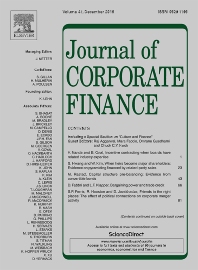
Executive Compensation Structure and Credit Spreads
We develop a model of managerial compensation structure and asset risk choice. The model provides predictions about how inside debt features affect the relation between credit spreads and compensation components. First, inside debt reduces credit spreads only if it is unsecured. Second, inside debt exerts important indirect effects on the role of equity incentives: When inside debt is large and unsecured, equity incentives increase credit spreads; When inside debt is small or secured, this effect is weakened or reversed. We test our model on a sample of U.S. public firms with traded CDS contracts, finding evidence supportive of our predictions. To alleviate endogeneity concerns, we also show that our results are robust to using an instrumental variable approach.





